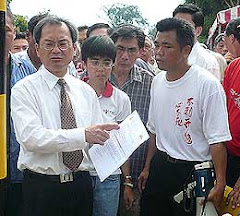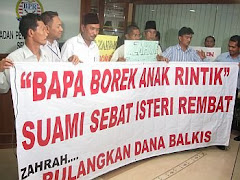LANDOWNERS and residents living along Jalan Beremi (Lot 751) in Bukit Bintang are objecting to proposals in the Draft Kuala Lumpur City Plan 2020, which has marked the area as Public Open space.
Normally residents would be jumping for joy when space is left for greening in any neighbourhood but the residents are not too pleased as the land belongs to them and they were not informed about the plan by the Kuala Lumpur City Hall (DBKL).
“Our lots are located on freehold land and are designated mixed residential and commercial and hence we are against City Hall's plans to turn the place into a public open space,'' said resident K.K. Kwan.
Kwan said the existing park in front of his home is adequate and falls within the definition of local play area whereby open spaces located in residential areas or in urban commercial centres within walking distance of users is secured from developments through development control mechanisms.
 Common stand: Fong (second from right) with residents from Jalan Beremi in Bukit Bintang who filed their objections to the draft KL City Plan 2020.
Common stand: Fong (second from right) with residents from Jalan Beremi in Bukit Bintang who filed their objections to the draft KL City Plan 2020.“The park is more than adequate for the use of residents within a 500m radius. It is not overflowing with residents and visitors that it needs to be urgently enlarged,'' he said.
Residents said that apart from them, drug addicts also frequent the park at night and they believe that by enlarging the park it will only create a much bigger social problem in the neighbourhood.
Resident Katherine Lim said that by acquiring their lots to enlarge an existing park would not contribute to the green lung effect for the community nor for the city landscape.
“There are other vacant plots of land in the neighbourhood. If there is a genuine need for a larger open area or green lung, City Hall should make use of this area instead and not pick on us,'' she told Star Metro after filing her objections at the lobby of City Hall headquarters yesterday.
Bukit Bintang MP Fong Kui Lun accompanied Lim and several other residents.
Fong said the lots in Jalan Beremi were freehold and it was unfair to reclassify the area as open space.
“It is too close to the commercial centre for it to be turned into an open space,'' he said.
“Besides, there was never a pre-consultative process with the residents as per the Town and Country Planning Act 1976 '' Fong said.
City residents have until Aug 31 to file their objections.










